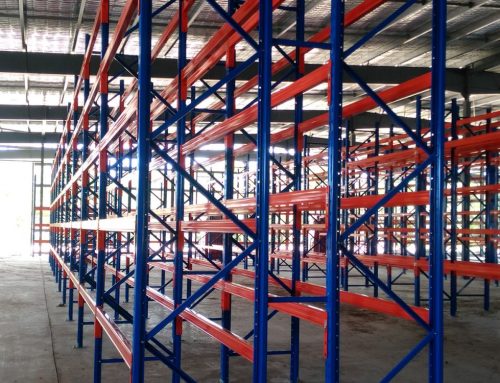Warehouse Language:
Key Terms Every Warehouse Manager Should Know
Warehouse management is never an easy task. Warehouse workers in Brisbane, Australia are always facing challenges because of the changes in warehousing. Even though changes occur at a rapid rate, a proper warehouse management system is crucial to profitability in your business. This puts a great pressure to warehouse managers.
Photo Courtesy of punttim via Pixabay
Many managers often ignore the value of warehouse management fundamentals. As a result the whole management is bound for a repetitive failure. So if you think you are heading in the wrong direction, start brushing up your knowledge with this quick guide to the key terms you must master by heart to make your warehouse management system a success.
Advance Shipping Notice (ASN) – this is the detailed information of shipment which describes the nature of the shipment and the contents (individual products and quantities of each), and is usually transferred in advance delivery by a shipper to a customer. ASN is also known as 856 transaction in Electronic Data Interchange (EDI) standards. Moreover, it contains the time of shipment, expected time of arrival, and carrier and shipment specifics. ASD data is helpful in giving digital information about what is inside the shipment and can be used to lessen manual data entry of information.
Cycle Counting – a practice of inventory management and control which means the process of regular scheduled inventory counts (regular often means daily) that cycles throughout your inventory. The users regulate how frequently certain items or locations are calculated using dollar values or frequency separated into “ABC” categories. This process can diminish the need to undertake manual physical counts leading to a higher level maintenance of accuracy.
Cross Docking – a warehouse distribution system that allows merchandise received at a distribution center to be prepared for shipment to retail outlets. This requires tight synchronization of all shipment movements (inbound/outbound). The elimination of ‘put-away’ through this system reduces distribution costs of storage and selection operations.
License Plate – is a pallet tag that contains information about the product on the pallet. It is a numbered sticker placed on a pallet of product.
Replenishment – the procedure of moving inventory from a reserve or upstream storage location to a primary (or downstream) picking location or to another mode of storage in which parking is performed.
Radio Frequency Data Collection (RFDC) – is a way to real-time communicate to a host computer from a mobile location. Wireless data entry is provided by RF terminals and displayed with an RF base station which is connected to the host computer. All data provided by RFDC is real-time and can be verified and updated interactively. Mastering this can improve an operation’s efficiency because of the elimination of paper work and more space requirements.
Serial Shipping Container Code (SSCC) – an identification number usually in 18-character that is used to determine containers including pallets and identify boxes primarily for containers which are a part of a shipment covered by an Automated Shipment Notice.
Task interleaving – the combination of warehouse picking and put away. Warehouse management system employ logic to command (typically with an RF terminal) a lift truck operator to put away a pallet directed to the next pick. The objective is to reduce driving empty material handling equipment around the warehouse.
Voice directed or voice activated – a system used to guide warehouse personnel via voice commands.
Zone Picking – a picking order method where warehouse is divided into pick zones with designated order pickers only picking items in an assigned zoned. This is also known as pick-and-pass wherein orders move on conveyor systems from one zone to the next and then picked.
Warehouse managers should also be masters in inventory. Inventory is crucial in the over-all profit of your warehouse especially in these days of e-commerce and digital retailers. And as a warehouse manager, you should keep up to these distribution challenges inside the warehouse. Achieve a great inventory management by knowing these terms:
Stock on hand – the most common term but still important. Making inventory management effective starts with the understanding of what you actually have on hand. Measuring stock means counting everything
Photo Courtesy of Mediamodifier via Pixabay
2. Overstock – many e-commerce retailers made this term popular. This refers to products stored in much larger quantities than what is required. However, preventing and identifying overstock can be easy. Compare your past sales trends with stock on hand. If the results show you’ve stocked more products than you’ve typically been able to sell, then, it might be an overstock. Once you have this information, you can prevent ordering more product than it is needed.
3. Understock – This is sort of the opposite of the overstock. A certain product is selling faster than the usual and left your inventory with low stock number. Understock can happen if an item has a long lead time from the supplier. When this occurs, make sure to make ahead and frequent orders to meet your customers’ demands.
4. Deadstock – This is the kind of stock, retailers and managers want to avoid. It refers to stock no longer selling and resulting to loss of profit. This could be from your overstock or some seasonal reasons. Counter this by creating demands through discounts, sales, and other creative marketing ways.
Great things start small. Some may say that understanding warehouse terms is no big deal but it could impact your business in many ways. As a warehouse manager, people look up to you for the orderly and timely supply of company products. Keep in mind that you cannot sell what you don’t have in stock – a frustrating scenario when customers come to you with money to spend. Educate your team with these terms to make sure every one is competent inside the workplace. Always strive to be disciplined and constantly drive for improvements.
Moreover, warehouse needs and strategies can be different from one to another. There are comprehensive list of terms that can be applicable to your warehouse layout or system. Don’t be afraid to pause and start over with the ABCs of warehouse management.
“With great power comes with great responsibility.”




